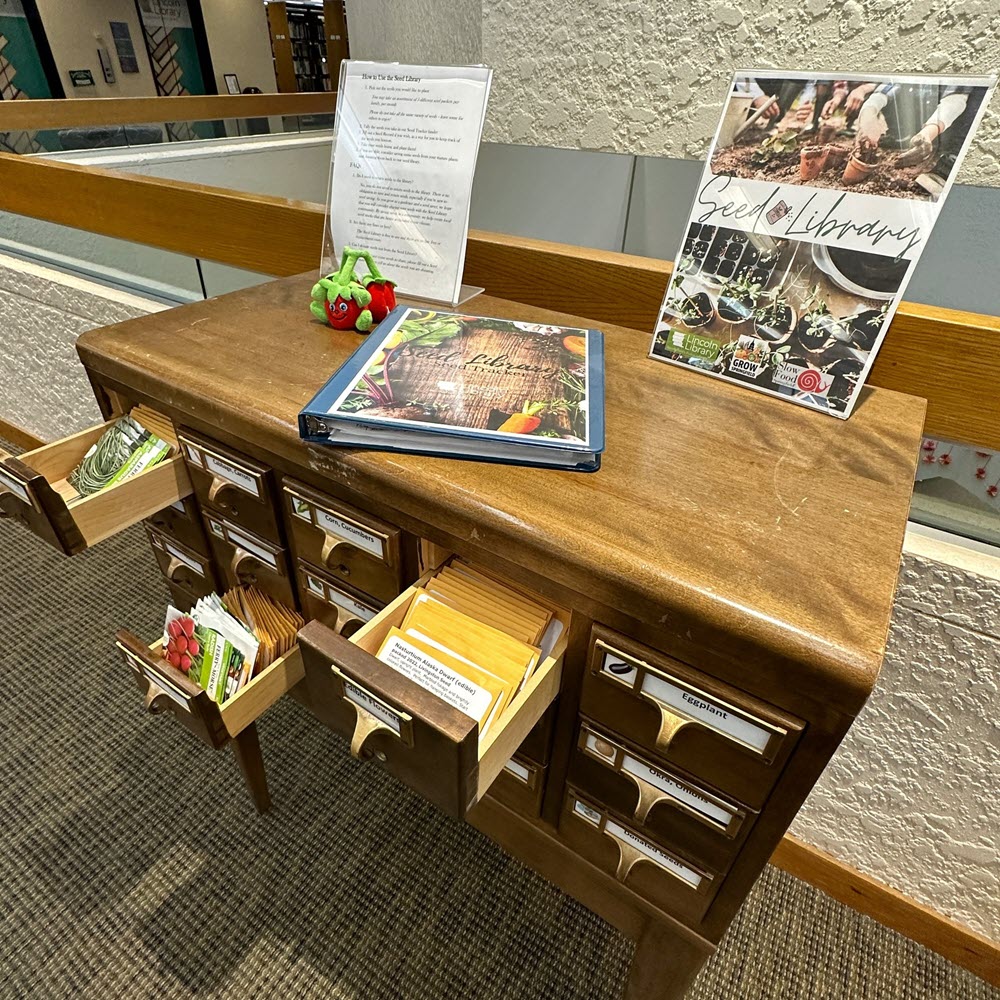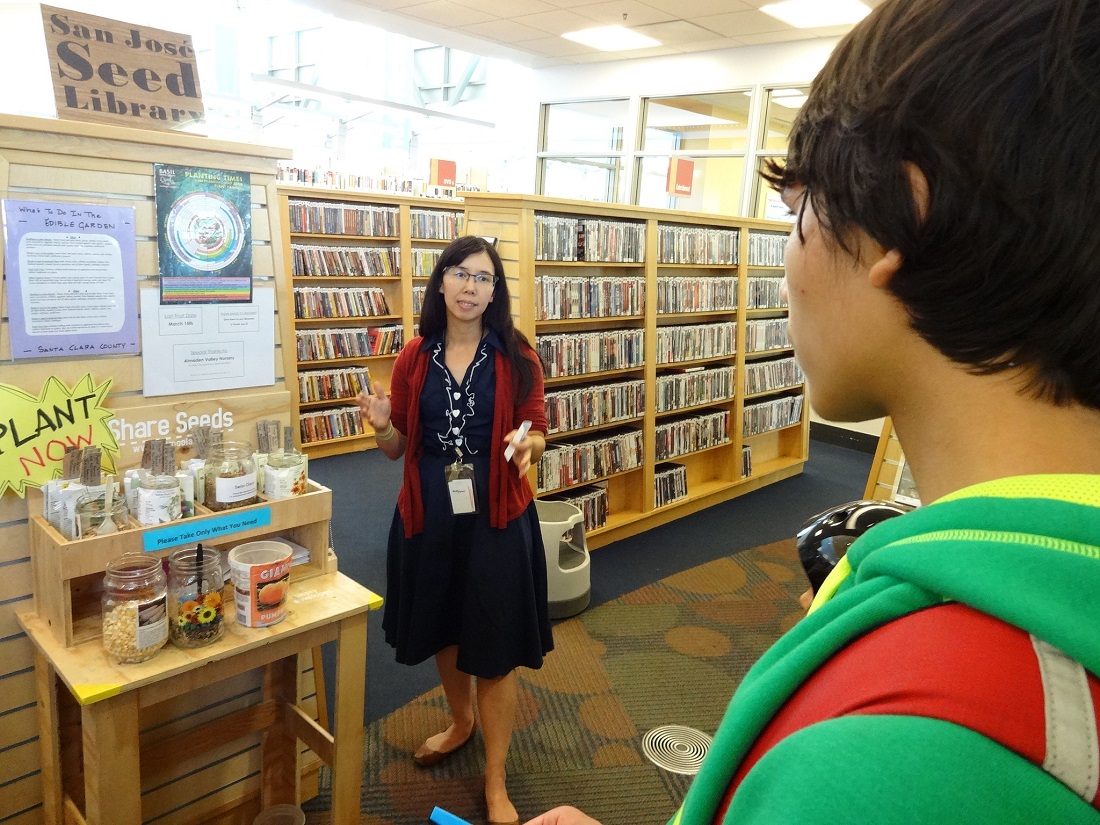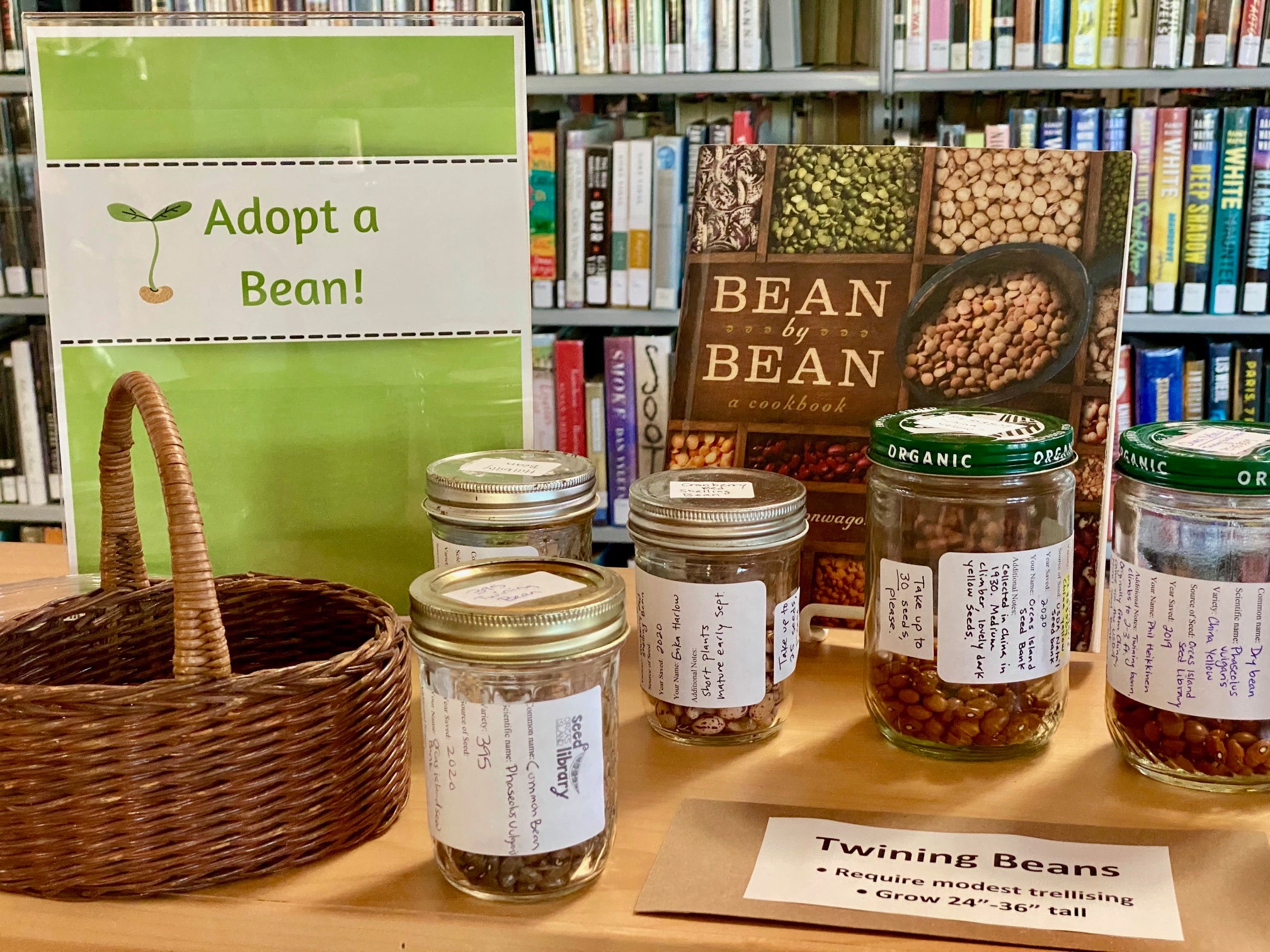Sow connection with seed libraries

on Facebook
Seed libraries offer a great way for new and experienced gardeners alike to expand their access to a wider variety of seeds, and traditional libraries are getting in on this growing trend. Seed libraries are community-based collections of seeds that are shared and distributed among members. People are invited to take a small selection of seeds to start their own garden, and they are encouraged to save seeds from the resulting vegetables, fruits, and flowers to restock the library. Adding a seed collection to your library can help build community in a new way, promote biodiversity, and help address food access and insecurity issues.
Get growing
Starting a seed library doesn’t have to be a complicated undertaking; libraries can start small and grow the collection as resources develop with the community. Here are some steps to take to start building your seed library.
- Define your goals for starting a seed library. Examples include increased access to fresh food, educate community about sustainability practices, protect heritage plants.
- Choose a location and display. Some libraries are getting creative by repurposing old card catalogs to house their seed collections, but it’s okay to start with items you already have on hand, like a simple shelf or spare storage containers.
- Build your seed collection. Many libraries start building their seed collections by hosting a community seed swap or inviting the public to donate seeds. You can also ask for donations from local businesses or seek grant funding.
- Label, organize, and display your seeds. Be sure to include the plant name, collection or expiration date, and growing instructions.
- Decide how your seed library will operate. Most seed libraries allow people to check out a specific number of seed packets per visit. Check-out procedures can be kept simple to minimize the amount of oversight required to keep the library going.
- Promote your seed library. Use social media, print materials such as growing guides, or hold a kickoff event timed with the growing season.
- Collaborate. Partner with other local groups, such as Master Gardeners or state extensions.
Seed library inspiration
Check out how libraries across the country are engaging with their communities through their seed collections.
Chillicothe and Ross County Public Library (Ohio) offers Seed Library displays at all of their branches. Patrons are welcome to “check out” five packets of seeds per visit. Their Facebook Reel video offers a sneak peek at one of the seed library displays.
Davenport Public Library (Iowa) offers individual seed packets as well as seed collections, which include six to eight types of seeds that share a purpose. Offerings include native prairie plant seeds, cutting garden flower seeds, and salsa garden seeds.

on Flickr, CC BY-SA 2.0
Nashua Public Library (New Hampshire) designed their seed library with the goals of addressing food insecurity, supporting agricultural heritage, and reflecting Nashua’s cultural diversity. Their seed library webpage also features resources to help gardeners plan their gardens.
Free Seed Libraries in Minnesota features a list of both community and library locations.
Visit the seed library at UNC Kenan Science Library via this short video tour.
Caro Area District Library in Michigan hosts a Seed Saving and Lending Library Program including special events and classes to help attendees learn how to plan and plant their seed gardens.
The High Plains Seed Library in Wyoming hosts a seed library. See blog post on WyomingLibraries.org
The Orcas Island Seed Library (Washington) offers online resources and recommended reading on their website. In 2021, they hosted an Adopt-A-Bean program, which aimed to expand the seed library’s bean collection.
Grow it in Person is the seed collection available at Person County Seed Library (North Carolina). The library posts frequent updates to their Facebook page with available seeds, like these seeds that are ideal for fall crops.

Build your own seed library
These additional articles can help inform your efforts as you as you start planning and building your seed library.
- Growing your patron base, Massachusetts Library System, 2019
- How to launch your own seed lending library, Sharable, 2022
- How Public Libraries Are Seeding America’s Gardens, Eater, 2022
- Why So Many Public Libraries Are Now Giving Out Seeds, Atlas Obscura, 2018
More reading and resources
Browse these resources for further guidance in building a seed library in your own neighborhood.
- Association of American Seed Control Officials, referenced in Seed Libraries and State Laws, American Libraries, 2014
- Find your local Extension Agency to learn about what grows well in your area, for example Clemson Extension
- Greenville County Library System Seed Library and their Gardening & Sustainability YouTube channel
- Iowa Seed Libraries features a resource page with overviews, potential partners, and reading lists.
- Michigan Seed Libraries resources
- SC Plants the Seed website and toolkit
- Seed Libraries website, including resources and an online community of seed librarians
- Seed Savers Exchange
- Seed libraries and other means of keeping seeds in the hands of the people—This 2015 book by Cindy Conner offers an overview of community-based initiatives to preserve and protect our food supply, including how public libraries can play a role.
Building a seed library is a fun and rewarding way to build community and promote sustainability. Remember, seed libraries can start small and grow as resources allow. If your library isn’t ready to host a seed library, you might consider collaborating with an existing seed library or gardening group.
If you have resources or examples to share find us on social media or contact us at [email protected].
WebJunction resources
For further reading and resources, check out these WebJunction articles and webinar.
- Food Access and Seed Libraries in Rural Public Libraries—This WebJunction webinar features firsthand experiences with starting seed libraries and tips for getting started with a seed library of your own. Visit the webinar page for additional resources, including the webinar slide deck, learner guide, and recommended reading.
- Seed and Plant Swap Grows During COVID—Julie Kent (Erie City Public Library) writes about how her library’s seed collection program kept community connections going during pandemic shutdowns.
- Seeds of Change: A Seed Library for All Ages—Chris Rogers (Spartanburg County Public Libraries) writes about starting a seed library at Orangeburg County and Middle Tyger Libraries and offers tips from what he and his colleagues learned.
- For more information and resources about growing library gardens, visit Growing Library Garden Programs.
